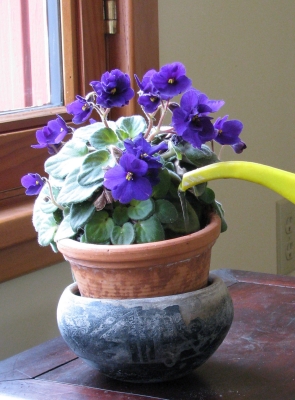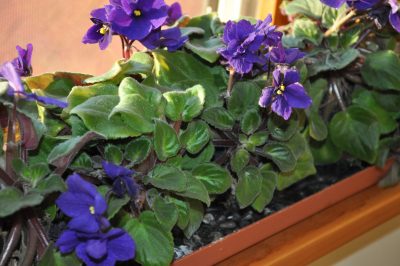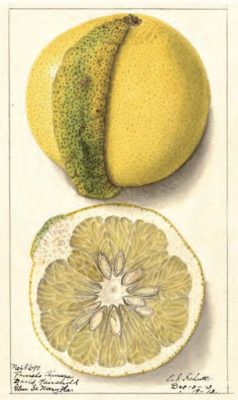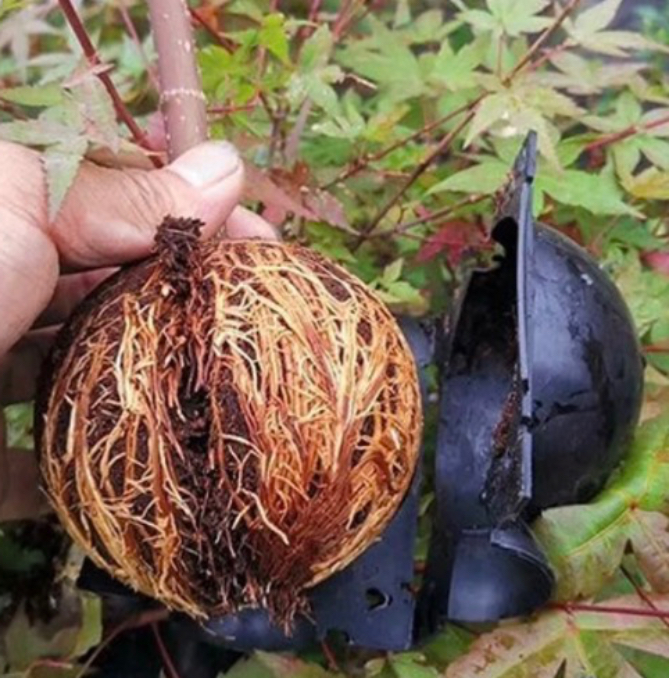REVEALED
/0 Comments/in Gardening/by Lee ReichOnly for Gray-Haired Ladies?
I’m coming out. Today. Let me explain.
Decades ago, when just starting getting my hands in the dirt, I — perhaps other people, perhaps it was even true — thought it was only gray-haired ladies who grew African violets. As it turns out, a number of years after I had started gardening, I was offered an African violet plant (by a gray-haired lady). Back then, before I had accumulated too many plants, I was less discriminating than I am these days. I accepted.
I figured I could provide the special conditions African violets demand, according to what I read in numerous publications. “Proper watering and soil moisture is critical to your success,” I was told by one publication. I could provide the needed consistently moist soil with a potting mix especially rich in peat, compost, or some other organic material. I could monitor the plants thirst by lifting the pot to feel its weight or by periodic probing its soil with my electronic moisture meter.  I could of course be careful to avoid leaf spotting by not spilling any water, especially cold water, on the leaves. Watering from below would do the trick, with periodic leaching from above to prevent buildup of salts. They also like high humidity.
I could of course be careful to avoid leaf spotting by not spilling any water, especially cold water, on the leaves. Watering from below would do the trick, with periodic leaching from above to prevent buildup of salts. They also like high humidity.
Other requirements of African violets that were and are stated are temperatures 70-90 degrees (F) by day and 65-70 degrees at night. I was also admonished to keep an eye out for pests, including aphids, cyclamen mites, and mealybugs, and symptoms of disease. Root rot, for example.
Oh, and regular feeding should be administered except when resting (to the plants, not me).
NEW PLANTS, UP IN THE AIR
/2 Comments/in Houseplants/by Lee ReichAsexual Propagation
One of my great enjoyments in gardening is propagating plants. So many ways to do it! You can take stem cuttings or root cuttings, or you can serpentine layer, tip layer, or stool layer. And then there’s grafting, of which, as with layering and cuttage, many, many variations exist. Whole books have been written on plant propagation, even solely on grafting. My favorites for these two topics are Hartmann and Kester’s Plant Propagation: Principles and Practices and R. J. Garner’s Grafter’s Handbook.
The above mentioned methods of propagation are asexual. New plants are made from mother tissue of an existing plant. As such, all the new plants are clones of the mother plant. Not always, though.

Grapefruit chimera
A plant chimera, analogous to the lion-goat-dragon of mythology, is a plant made up of two genetically different cells, a plant mosaic. Depending on what part of the plant you take for propagation, you end up with a clone of one or the other cell type, or, perhaps, both (the chimera). A plant usually broadcasts that it’s a chimera with splotches or lines of color different from the surrounding color of the leaves, flowers, or fruits. (Splotches or lines of color can also be caused by viruses.)
PARING DOWN PEARS
/10 Comments/in Fruit/by Lee ReichSo Much From Which to Choose

Pear espalier in Mt. Vernon, WA
Of all the common tree fruits, pears are the easiest to grow — and not just here in New York’s Hudson Valley. My site is admittedly poor for tree fruits, the flat lowland acting like a reservoir into which cold, damp air flows, leading to increased threats from diseases and late frosts. Proximity to acres and acres of forest provides haven for insect pests.
But I’m not complaining; the air might be bad for apples, peaches, cherries, plums, and apricots, but underfoot is rich, well-drained, rock-free river bottom soil that grows very nice vegetables, berries, and many uncommon fruits such as persimmons, cornelian cherries, and kiwifruits. And pears.
Of the more than 3,000 varieties of pears, only a handful are well-known. I figured, as with apples, there must be many varieties better or as good-tasting as the few usually offered in markets. Back in 2004, twenty dwarf apple trees that I’d planted were nearing the end of their productive life. So I dug them out, which left me with space for a number of dwarf or semi-dwarf pear trees. But what varieties to plant? I sought suggestions from other fruit growers, from nursery websites and catalogues (especially Raintree Nursery and Cummins Nursery), from the USDA Pear Germplasm Repository, and books such as the 100-year-old tome The Pears of New York, finally settling on sixteen varieties (listed at the end of this blog post to avoid boring you if you don’t want such detail).




